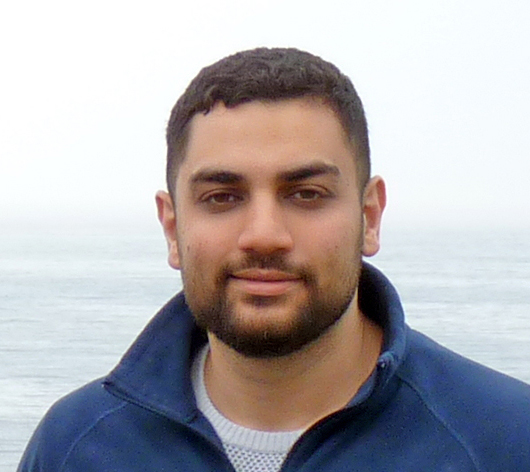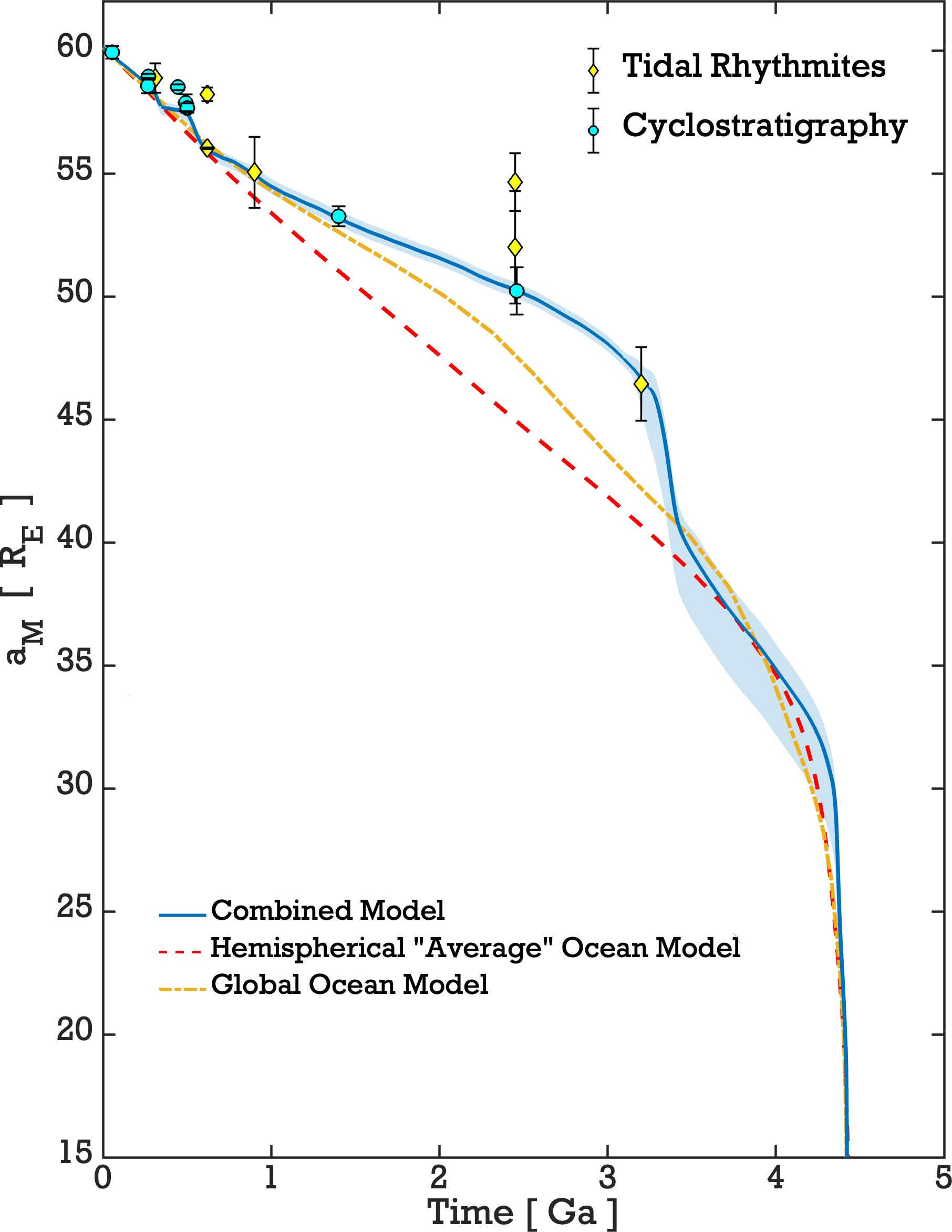Mohammad Farhat: A&A 2024 Best Thesis and IAU 2024 Thesis Prize
Mohammad Farhat receives both the Astronomy & Astrophysics 2024 Best Thesis Prize and the IAU 2024 Division F Thesis Prize (Planetary Systems and Astrobiology)

Mohammad Farhat is Lebanese. After completing a master’s degree at the American University of Beirut under the direction of Jihad Touma, he applied to carry out his thesis within the team of Jacques Laskar (IMCCE, Paris Observatory), known for his expertise in celestial mechanics. He obtained a doctoral scholarship from Sorbonne University for this thesis. The initial subject focused on tidal effects in extra-solar systems, but after the start of the multidisciplinary ERC AstroGeo project, involving geologists and astronomers, it appeared essential to better understand tidal effects in the Earth-Moon system. Indeed, despite the proximity of our satellite, its evolution since its formation has remained a source of numerous questions for fifty years.
Since the work of George Darwin in 1880, we know that due to the tidal interactions between the Earth and the Moon, the rotation of the Earth slows down and the Moon moves away at a rate of 3.83 cm/year. This has been measured since 1969 using Lunar laser telemetry with extreme precision. The age of the Moon is now also very well determined at 4.425 Ga. But one has also realized, for more than fifty years, that with the current rate of tidal friction, Darwin’s simple tidal model leads to a collision of the Moon with the Earth about 1.5 billion years ago, inconsistent with the age of the Moon.
During his thesis work, Mohammad Farhat developed the first coherent physical model that can account for both the current recession of the Moon and its age. This work required taking into account several elements, the first of which is the study of ocean tides. It has long been known that the main source of dissipation occurs in the oceans, and not in the solid Earth. The tidal dissipation for the planet Mars, for example, which does not have an ocean, is ten times less than that of The Earth. The work of Webb (1982) showed the presence of resonances in these ocean tidal effects. For certain values of the Earth’s rotation speed, these resonances between tidal forcing, linked to the length of the day, and the ocean’s own oscillations, can lead to an amplification of tidal dissipation. In particular, we are currently close to such a resonance. The dissipation is then amplified, and was therefore lower in the past. It remains to construct a coherent scenario of the evolution of the Earth-Moon system.
Most recent works have relied on geological indicators, witnesses to the past rotation speed of the Earth. However, the precision of these data is very difficult to estimate, and some are not consistent with each other. Within this thesis, it was therefore decided, in a first stage, not to take into account geological data, and to only consider extremely well-determined data such as the age of the Moon and its current recession speed. To establish his model, Mohammad Farhat was able to rely on the analytical developments carried out by Pierre Auclair-Desrotour (IMCCE/Paris Observatory) in recent years. The model used is very simple, and considers an Earth, either made up of a global ocean, or made up of a hemispherical ocean, and a continent occupying the complementary hemisphere. Mohammad also introduced an average evolution of the continents, based on what is known about the evolution of plate tectonics over the last billion years.
The interest of such a simple model (in its expression, because the realization remains extremely complex), is to have only two free parameters: the ocean depth, and a dissipation parameter at the bottom of the oceans. Adjusting these parameters to the two known data (recession speed and age of the Moon) then made it possible to obtain a unique model. Once obtained, this model was compared to available geological observations. The agreement of these data with Mohammad Farhat’s model is impressive. We thus obtain, for the first time, a model of the evolution of the Earth-Moon system, consistent with the current recession of the Moon and with the age of the Moon, and which, moreover, agrees with the most reliable geological sources. This model has received a very positive reception from the community of geologists, and now serves as a reference for studies on ancient sediments, studies of which the number is increasing.
After his thesis defended on January 5, 2023, Mohammad Farhat continued his work on dissipation in the Earth-Moon system as a postdoctoral fellow at IMCCE within the ERC AstroGeo project (www.astrogeo.eu). He has just obtained a Miller Fellowship at the University of Berkeley (https://miller.berkeley.edu/fellowship), CA, USA, which he will join in fall 2024.

Reference
M. Farhat, P. Auclair-Desrotour, G. Boué, J. Laskar, 2022,
“The resonant tidal evolution of the Earth-Moon distance”, A&A Letters.
Press Release
More information
- “A consistent scenario for the evolution of the Earth-Moon distance”,
on the IMCCE website. - “First-ever physical model consistent with the history of the Earth-Moon system”,
on the CNRS News website.